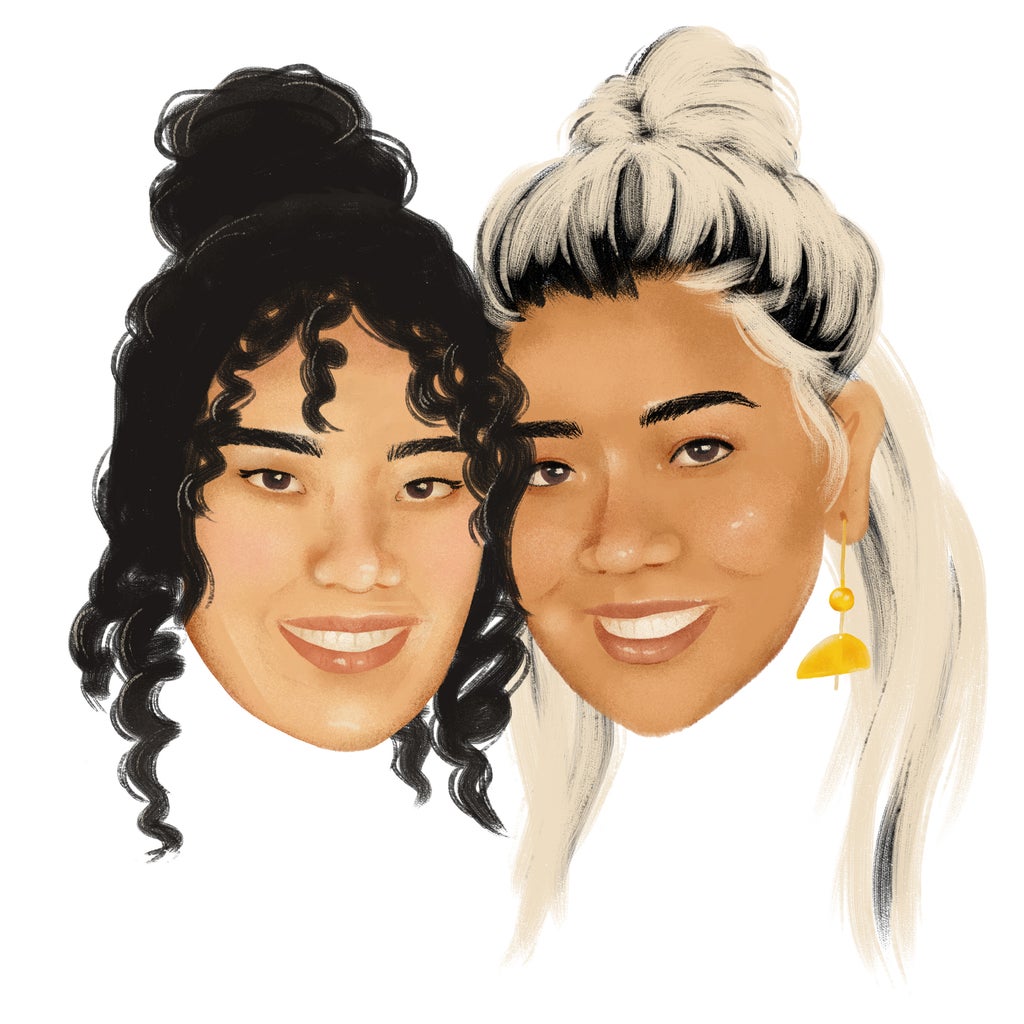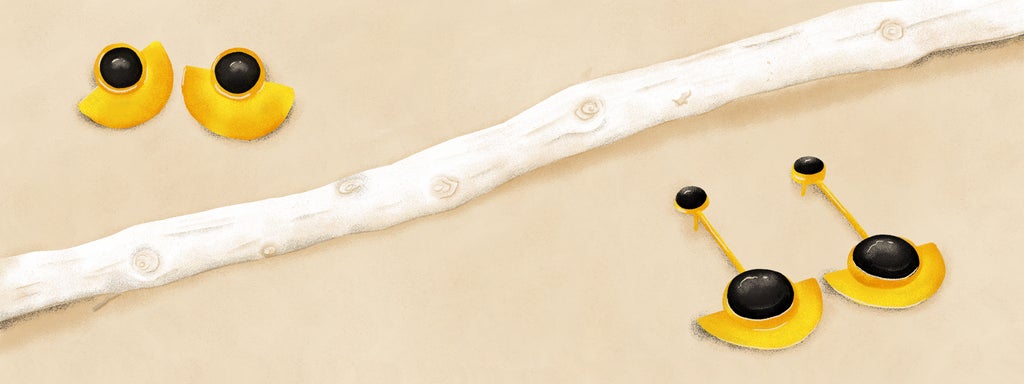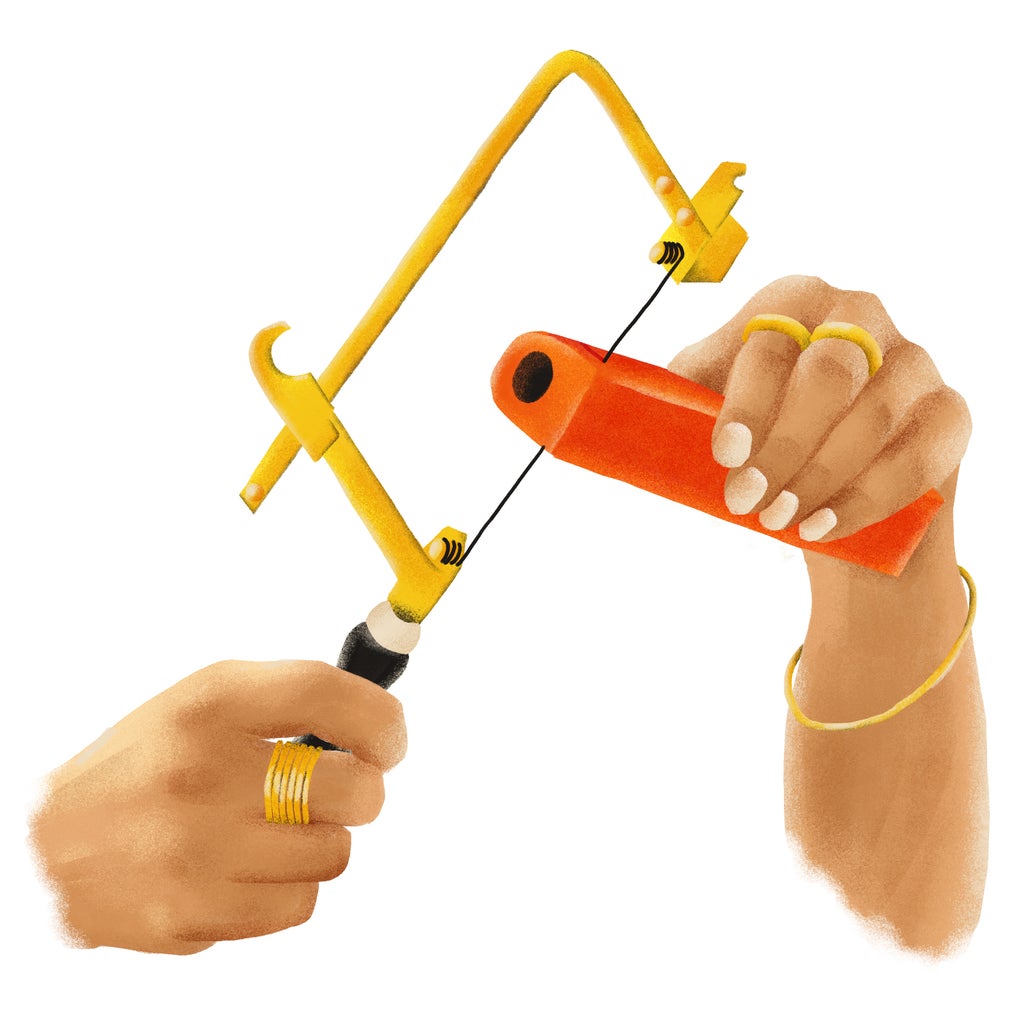Gumption and a good eye aren’t all it takes to start your own fashion brand. In partnership with The CW series Katy Keene, in which Lucy Hale plays an aspiring designer trying to make it in the big city, one day at a time, we’re digging into the specifics of striking out on your own.
No one says “Bring in the lawyers” unless something has gone terribly wrong. But according to Ivy Ocampo and Jeanette Sawyer, cofounders of emerging accessories brand MAAARI, legal counsel is their top advice for anyone who wants a new business venture to go terribly right.

Ocampo and Sawyer learned this the hard way after taking a DIY approach to setting up their LLC, but they’ve still managed to come out on the other side (with properly filed paperwork): Their line of jewelry and home goods inspired by Filipino tradition turns four in April. We caught up with both women at a liminal moment, as they prepare for a second round of funding that could make their dreams — including an expanded product offering (including ready-to-wear!) and a brick-and-mortar retail space — come true. Ahead, they get real about the unforeseen costs and “it was all worth it” gains you might expect to encounter when you’re starting your own business.
Starting your own brand is a major financial undertaking. Can you walk us through the process of making that decision?
Ivy Ocampo: “We were thinking of our product assortment and how to produce these items, and we were like, ‘We have no money.’ We knew we needed to get a loan. We did all the small things first, like setting up the LLC; even that takes a little bit of funding to do. But to get all the production and materials together, if you don’t have any backing, you need to look for a loan. So we started looking for organizations that had small-business loans, and there was one called Working Solutions out of San Francisco.”
Jeanette Sawyer: “It had a really low interest rate. They work on financing women-owned and women-of-color-owned businesses. We spent a good amount of time forming a business plan. Neither of us has a business background, but it was something we learned how to do by asking a lot of questions. My boyfriend’s dad gave us a lot of advice on how to go about things, and really, we were able to do what we did because we had so much support.”
Speaking of support, what was some of that advice that you would pass on to others wanting to go down the same road?
JS: “Ivy and I can design with our eyes closed, but the struggle for us and this business is making sure we’re getting out of the red into the green. There were a lot of things we learned and a lot of things we had to adapt to: figuring out production timelines, asking other businesses how they go about increasing their numbers, choosing what we should be investing our time in because we’re wearing so many hats. There was a learning curve to figuring out what we should prioritize. As much as Ivy and I would love to walk into a studio in the same city [editor’s note: Ocampo is based in New York, while Sawyer lives in L.A.] and have a $100,000 to support us designing all day long, the reality is Ivy and I spend a lot of the time on admin stuff.”
IO: “For example, our pricing was all wrong in the beginning. What Jeanette said about asking questions and looking to people who have done this is really important, because experience goes so much further than looking it up on the internet or what you learn in school. The textbook formulas are one thing, but the real-life ones are another.”

What was a surprise cost of starting your own brand?
IO: “Lawyer fees. You’re like, ‘Okay, I can file my paperwork.’ But then everyone advises you that you need to get a lawyer to make sure your stuff is right. They’re right because you don’t want to end up with your paperwork filed wrong —”
JS: “Which is what happened. Originally, when we started this brand, we were called the Tagalog word for ‘child.’ We were so gung ho, then all of a sudden, we found another brand with the same name but spelled differently. But really, we couldn’t [use it], because we wouldn’t be able to sell our goods. So we had to refile all our paperwork. When we did that, we did it with lawyers because we didn’t know how to change everything we had done using [legal software]. They went in and they said, ‘Actually, you didn’t file any of this correctly.'”
JS: “Especially if you’re a small business and bigger brands copy your designs, you have no way to fight those companies. You can post all you want on Instagram and people will be like, ‘That’s nuts,’ but [nothing happens].”
How do you make sure you’re doing good socially while turning a profit?
IO: “Our makers are a mix of U.S.-based designers and Philippines communities. In the Philippines, many of the communities we were connected with were through Anthill, a social enterprise where they have ethical standards for living wages. What was happening a lot in the Philippines, as with many underdeveloped countries, is artisans not getting paid fair wages for their craft — and them not even knowing that they were being exploited. We pay almost double the market price.”
JS: “A lot of these communities are scared they’re not going to get business because they’re in these remote areas, so whenever tourists or travelers come, they’re just eager to sell. So Anthill goes in and does strategy with them, and we’ve been there for a few of those sessions. When we make trips to the Philippines, we make a point of visiting our communities because it’s very important for them to know we’re real people, that we’re Filipinos, that we’re excited to learn about this aspect of our culture, and that we respect what they do.”
When most people think of fashion, they think highly produced shows and events. As an emerging brand, how do you work within and outside of that model?
IO: “Being super honest, we don’t have the capacity a lot of other brands do. We’re not at the point yet to even do things like that on our own. We held back so much from putting ourselves into the world because we were afraid we couldn’t meet the demand with production.”
JS: “Our first pop-up, we used cinder blocks and birchwood for our shelves. A friend from high school reached out and asked if we needed any custom builds. He made us these wooden pedestals that we only paid the cost of materials for, basically. If you’re super passionate about something, and you’re working on it every day and totally honest about the struggle, people want to help. MAAARI is where we are because of our community.”
IO: “It is what it is working with influencers and micro-influencers. We don’t even have the budget for some of them, but it’s capitalizing on those connections and seeing if people are interested in helping out a brand that has good intentions and a specific mission they might believe in. Just working with what you have and being —”
JS: “Creative.”

IO: “Literally snipping off flowers from the neighbor’s bushes. For our second big photo shoot, there were these beautiful grasses next door, so at night, I went over with shears and just snipped a bunch. It’s penny-pinching where you can — you have to do a lot of things yourself versus bigger brands who would pay an assistant or company to do florals. No, you’re going to the flower market at 6 a.m. lugging huge bundles of flowers yourself.”
Despite the roadblocks (and lawyer fees), what keeps you going?
JS: “When we started this brand, we really wanted to connect with our Filipino culture. I don’t look Filipino, even though I grew up with my whole Filipino side, but there’s always the [pressure] of being a doctor or lawyer to impress your parents. For both of us, it’s been a way for us to really connect with our moms and our families in a way I never thought would happen. Growing up as a Filipino-American, you go through all these cultural identity crises that you’re not brown enough, you’re not white enough —”
IO: “Or even aware that you’re having a cultural identity crisis.”
JS: “Exactly. For Ivy and me, aside from all the hard business stuff we’ve been figuring out, what’s so rewarding is having this community who are validating what we’re doing. We get messages all the time like, ‘I had no idea this weave was native to the Philippines.’ Our mission and goal is to show that our culture is super rich and diverse, and we can play ball with all the other artisans of the world. People think of weaving and they think of India and Mexico and no one ever thinks of the Philippines — for anything, except for nurses. What we’re invested in is putting Philippine design on the map, creating a platform for it, and carving out a space for that style of design.
“We want to empower women from these indigenous communities and developing nations and build and lift all together. That’s our end goal: to say we built this from the ground up, two women in support of all these other amazing women, and hopefully one day, it can sustain us all. We don’t have to work for asshole men.”
Watch the new CW series Katy Keene Thursdays at 8/7c or stream free next day on The CW app.
Like what you see? How about some more R29 goodness, right here?

No comments:
Post a Comment